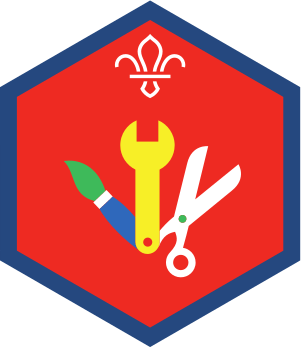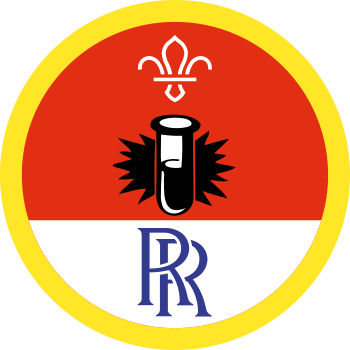Try the teeth test
You’ll need
- 5-8 clean jam jars
- 5-8 eggs
- A selection of fizzy drinks
- Vinegar
- Coffee
- Toothpaste
- Water
- Plan ahead and let everyone know what equipment they’ll need to do this activity online at home. You could think about safely delivering the equipment to group members if it’d be appropriate and manageable for your group.
- You may want to split the activity up and give each person one liquid to try so not everyone has to get lots of equipment. Everyone could take it in turns to show off their different eggs in your next online session.
- Check out the advice on using Zoom and other popular digital platforms and the guidance on being safe online.
Egg-cellent preparation
- Get some clean jam jars with lids, and the same number of eggs
- Prepare all of the different liquids. You’ll need water, vinegar, coffee and a selection of fizzy drinks. Try to get a mixture of different colours to make the experiment more interesting. You could even try some ‘diet’ or ‘light’ soft drinks to see if they affect the eggs differently
- Prepare the coffee without any milk, and allow it to cool down.
Talk about teeth
- Explain that the experiment will show the effects of certain drinks on our teeth, but because we can’t use real teeth, we’re using eggs.
- This is because drinks affect eggshells similarly to how our they affect our teeth.
- Ask everyone how they take care of their teeth. How often do they brush? How long do they brush for? Do they floss? Do they use mouthwash? Do they use straws when drinking acidic drinks?
Egg-citing experiment
- This experiment should be done over two meetings to allow the liquids to interact with the eggs
- The clean, empty jam jars should be half-filled with each of the liquids. You should do three jars with coffee in – two regular and one with some sugar in.
- Cover one egg in toothpaste. This one will go in one of the regular coffee jars to see whether toothpaste changes how the coffee affects the egg.
- Place an egg in each of the jars and screw the lid on. Be sure to label what is in each of the jars.
- Leave the eggs in the liquids for a week until your next meet to give the liquids a chance to affect the eggs.
Eggs-amination time
- After a week, the person leading the activity should ask everyone what they think has happened to each of the eggs.
Which mixture will have stained the eggs the most? What changes do they think will have happened to the eggs?
- Remove the eggs from the jars one by one, and look at how the liquids have affected each of the eggs. Some will appear discoloured or stained by the liquid.
- The egg in vinegar should be rinsed with water, and if it is gently rubbed, the shell should come away. This is because the vinegar is very acidic and decays the eggshell. The person leading the activity should explain that this is an extreme example, but that soft drinks also contain a lot of acid, and so drinking lots of them can be damaging to your teeth.
- Compare the eggs that had been left in coffee to see whether the one in toothpaste was affected less than the others. It should be less stained than the eggs without toothpaste.
Reflection
This activity helped you think about the effect of drinks on your teeth. What surprised you most about the experiment? How has this helped you think about looking after your teeth? What do you think would happen to your teeth under the same conditions? (The experiment shows that sugary and acidic drinks are damaging to your teeth if you drink them too often. The egg covered in toothpaste should have also shown that it helps prevent damage to teeth, so it is really important to look after your teeth by regularly brushing them).
This activity was also about problem-solving. We all made predictions about what we thought might happen in the experiments. What led you to make those predictions? What did you learn from the ones that did and didn’t come true?
Safety
All activities must be safely managed. You must complete a thorough risk assessment and take appropriate steps to reduce risk. Use the safety checklist to help you plan and risk assess your activity. Always get approval for the activity, and have suitable supervision and an InTouch process.
- Science
Supervise young people, and only do science activities that are advised and age appropriate for your section. Test activities first, to make sure you’re confident you can lead them safely. Use protective clothing where necessary.
- Food
Remember to check for allergies, eating problems, fasting or dietary requirements and adjust the recipe as needed. Make sure you’ve suitable areas for storing and preparing food and avoid cross contamination of different foods. Take a look at our guidance on food safety and hygiene.
- Water games and activities
Be careful when doing activities with, in, or near water. Check surfaces and reduce the risk of slipping where possible. Make sure you have appropriate supervision for this activity.
You could try a bigger selection of liquids, such as milk, juice, squash etc. You could try using toothpaste and a toothbrush on the eggs afterwards to see if any of the discolouration can be brushed away.
For anyone in the group who disagrees with using animal products (eggs) in experiments, you can substitute the eggs for calcium blocks (typically used for birds and reptiles kept in captivity) available at pets shops.
All Scout activities should be inclusive and accessible.
Allow the young people to decide what substances to submerge the eggs in. Could they run this experiment at home using their favourite drinks?


